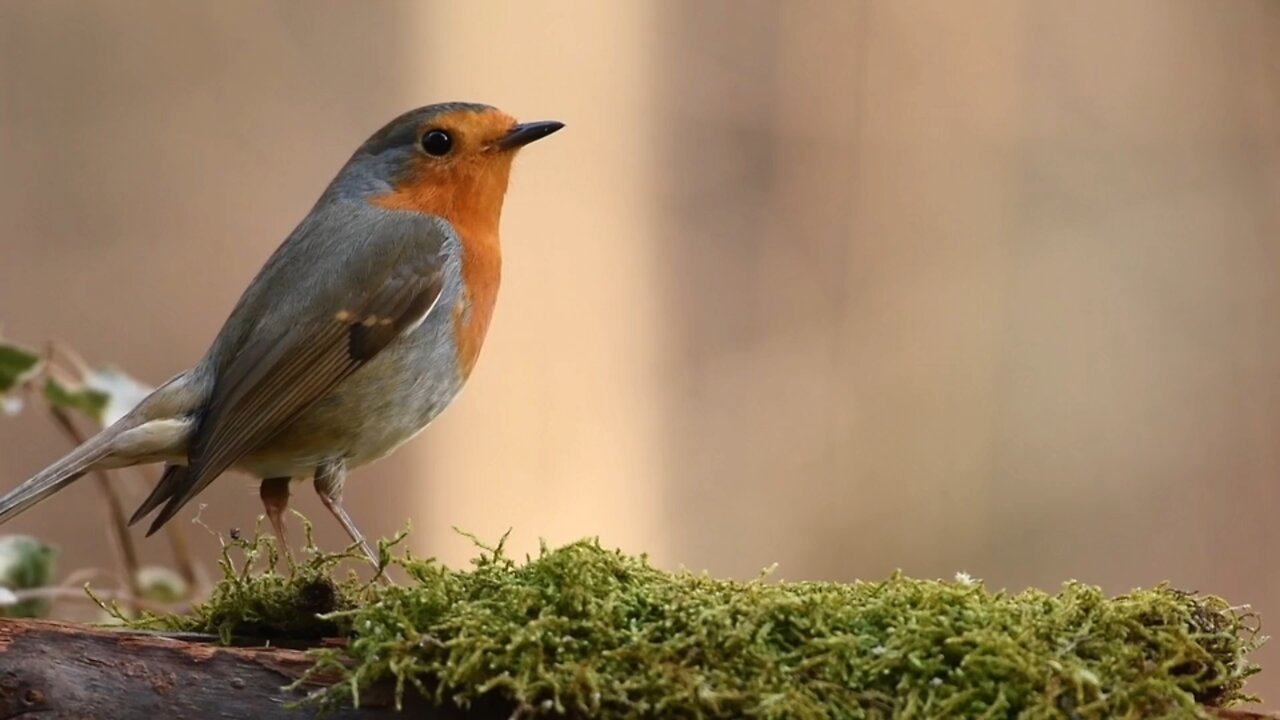Premium Only Content

"The European Robin: A Tale of Song and Survival"
The European robin (*Erithacus rubecula*) is a small, insectivorous songbird native to Europe, western Asia, and parts of North Africa. Known for its distinctive orange-red breast and face, the robin is a familiar and beloved bird across its range, often associated with winter and Christmas in European culture.
### Key Features:
- **Size**: The European robin is small, measuring about 12.5–14 cm (5–5.5 inches) in length, with a wingspan of 20–22 cm (8–9 inches).
- **Plumage**: Its most striking feature is the bright orange-red breast, extending up to the face and throat. The rest of the body is mainly brown with a white belly.
- **Song**: The robin's song is a sweet, warbling melody, which is often heard year-round but is particularly prominent in the spring and autumn.
### Behavior and Habitat:
- **Habitat**: Robins are highly adaptable and can be found in a variety of habitats, including woodlands, gardens, parks, and hedgerows. They are particularly fond of areas with dense undergrowth where they can forage for insects and worms.
- **Behavior**: European robins are territorial and can be quite aggressive towards intruders, especially during the breeding season. They are also known for their curious and bold nature, often approaching humans closely, especially when food is involved.
- **Diet**: Their diet primarily consists of insects, worms, spiders, and other invertebrates. In winter, they may also eat berries and seeds when insect prey is scarce.
### Cultural Significance:
- The European robin is a symbol of Christmas in many European countries, often featured on holiday cards and decorations.
- It has a strong presence in folklore and literature, frequently depicted as a friendly, helpful bird.
- The robin is the national bird of the United Kingdom.
### Breeding:
- Robins typically breed from April to June, with females laying 4-6 eggs per clutch. The nest is usually built in a hidden, sheltered location, such as a tree hole, wall crevice, or among dense vegetation.
- Both parents take part in feeding the chicks, which fledge around 14 days after hatching.
### Conservation:
- The European robin is currently listed as a species of Least Concern by the IUCN, meaning it is not at immediate risk of population decline. Its adaptability and widespread presence help ensure its survival across its range.
This bird's charming appearance and melodious song make it a favorite among birdwatchers and nature enthusiasts across Europe.
-
 LIVE
LIVE
Side Scrollers Podcast
3 hours agoDEI’s FINAL BOSS EXPOSED + Book Publisher REVERSES Cancel Attempt + More | Side Scrollers
852 watching -
 1:48:42
1:48:42
Steven Crowder
4 hours agoDid You Vote for This: Why The Podcast Bros are Turning on Trump
322K283 -
 1:08:40
1:08:40
The Rubin Report
3 hours agoListen to ‘The View’ Crowd Gasp as Whoopi Tells Super Bowl Crowd to Do This
44.1K50 -
 LIVE
LIVE
LFA TV
15 hours agoLIVE & BREAKING NEWS! | TUESDAY 10/7/25
3,656 watching -
 LIVE
LIVE
Rebel News
1 hour agoTamara Lich sentencing, Two years since Hamas attack, Carney meets Trump | Rebel Roundup
392 watching -
 LIVE
LIVE
TheAlecLaceShow
1 hour agoICE Under Siege in Chicago & Portland | Guests: Douglass Mackey & Wid Lyman | The Alec Lace Show
48 watching -

The Mel K Show
1 hour agoMORNINGS WITH MEL K -Overwhelming Evidence of Grand Conspiracy Against We the People 10-7-25
17.9K7 -
 LIVE
LIVE
The Shannon Joy Show
12 hours agoEugenics, Vaccination & The Unholy Trump/Pfizer Alliance LIVE W/ Brook Jackson & Warner Mendenhall
238 watching -
 31:12
31:12
Grant Stinchfield
2 hours ago $0.39 earnedWhen Science Became Propaganda
11.5K4 -
 1:01:30
1:01:30
Trumpet Daily
2 hours ago $1.27 earnedTrumpet Daily LIVE | Oct. 7, 2025
17.3K2
